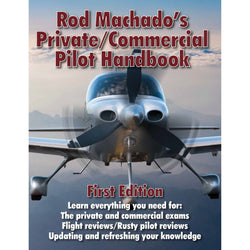To the average person, the sky looks like a wide-open expanse with no roads, lane dividers, speed limit signs, or traffic signs. Of course, our view is completely different as pilots. Equipped with a full load-out of charts (plus a handy FAA Aeronautical Chart Users Guide to help us interpret them), we are well-aware of the invisible boundaries, regulations, and responsibilities that come along with a license to fly.
Today we’re doing a deep dive on all things airspace. We’ll answer basic questions like, “What are the different classes of airspace and what do I need to know about each?” plus address burning worries like “What should I do if I accidently enter a type of airspace I’m not cleared to be in?” or “What are some common airspace mistakes pilots make?”
Understanding the National Airspace System
The United States’ National Airspace System (NAS) includes all airspace within the United States, which is grouped by categories and types within the categories.
Categories of Airspace
There are just two categories of airspace: regulatory airspace and non-regulatory airspace.
Regulatory Airspace
If an airspace is regulatory, pilots flying within it must follow specific rules that define the strict operational standards of that space.
Non-regulatory Airspace
In non-regulatory airspace, the purpose of the airspace is defined, and operational safety standards are issued, but the standards aren’t subject to the same stringent rules-based process as in regulatory airspace.
Types of Airspace
The following four types of airspace can be found within both the regulatory and non-regulatory airspace categories:
- Controlled Airspace
- Uncontrolled Airspace
- Special Use Airspace
- Other Airspace
Controlled Airspace
All classifications of controlled airspace have unique criteria within which air traffic control service is provided to IFR and VFR flights. Controlled airspace includes Class A, Class B, Class C, Class D, and Class E.
Uncontrolled Airspace
Airspace that has been designated as uncontrolled, is not under the jurisdiction of air traffic control, and no ATC services are provided within such space. That doesn’t mean that uncontrolled airspace is always unregulated, however. For example, within Class G uncontrolled airspace, visual flight rules still apply.
Special Use Airspace (SUA)
The FAA defines Special Use Airspace, or special area of operation (SAO) as “airspace in which certain activities must be confined, or where limitations may be imposed on aircraft operations that are not part of those activities.”
Special Use Airspace can be either permanent or temporary in duration. Permanent special use airspace is shown on En Route charts, Sectionals, and VFR Terminal Area charts. Temporary special use airspace is communicated in several places including on the FAA’s SUA website.
Prohibited and Restricted airspace are both types of regulatory special use airspace.
Non-regulatory special use airspace includes warning areas, military operating areas (MOAs), alert areas, controlled firing areas (CFAs), and national security areas (NSAs).
Other Airspace
Think of “other” airspace as the oddball leftovers that fit neither the definition of standard nor special use airspace. “Other” airspace includes:
- Local airport advisory (LAA)
- Military training route (MTR)
- Temporary flight restriction (TFR)
- Parachute jump aircraft operations
- Published VFR routes
- Terminal radar service area (TRSA)
- National security area (NSA)
- Air Defense Identification Zones (ADIZ) land and water
Classifications of Regulatory Airspace
As the name suggests, when you fly within regulatory airspace, you must follow all the specific regulations that govern that airspace. Use the links below to click through to detailed guides on many of the classes of regulatory airspace.
The classes of regulatory airspace are:
- Class A Airspace
- Class B Airspace
- Class C Airspace
- Class D Airspace
- Class E Airspace
- Class G Airspace
- Restricted Airspace
- Prohibited Areas
- Temporary Flight Restrictions (TFRs)
- Wildlife and Recreational Area
- Air Defense Identification Zone (ADIZ)
Class A Airspace
Class Alpha airspace is the most restrictive of all classes of controlled regulatory airspace. This high-altitude enroute airspace has numerous entry and operational requirements for the pilots and jets / turboprop aircraft that travel through it.
Class B Airspace
Class Bravo airspace is a controlled regulatory airspace shaped like three concentric rings that protects and surrounds the largest, busiest airports. Unlike Class A airspace, smaller private aircraft can enter Class B airspace if they meet the requirements.
Class C Airspace
Class Charlie airspace is a controlled regulatory airspace with a distinctive shape that looks like an upside down three-tier wedding cake. This type of airspace is located near mid-size airports and can be entered by both airline and general aviation traffic that meets the operational requirements.
Class D Airspace
Class Delta airspace is a controlled regulatory airspace usually found near smaller airports with a control tower and weather reporting but no radar services. Class D airspace starts at ground level.
Class E Airspace
Class Echo airspace is the least restrictive level of controlled regulatory airspace. It has an irregular shape as it fills in the gaps around other classes of airspace. Rather than a local control tower, ATC control within Class E is typically achieved by radar coverage.
Class G Airspace
Class Golf airspace is an uncontrolled regulatory airspace. It is often found in lower altitudes and in less dense population areas. Class G exists wherever Classes A, B, C, D, and E do not. It is typically found next to Class E airspace.
Restricted Airspace
Restricted airspace is a type of regulatory special use airspace. Restricted areas are designated when operations within that area are hazardous to nonparticipating aircraft and special restrictions must be followed to enter the airspace. Unusual and often invisible hazards like aerial gunnery, guided missiles, or artillery firing may be present in restricted airspace.
Prohibited Airspace
Prohibited airspace is a form of regulatory special use airspace that protects national welfare and security (for example, Camp David and the National Mall in Washington, D.C.). Nonparticipating aircraft are always banned from operating within prohibited airspace. This type of airspace is published in the Federal Registrar and depicted on aeronautical charts with the letter “P” and a number.
Pro Tip: Wondering what you should do if you accidently enter a restricted or prohibited airspace? Hopefully none of us are ever in this position, but if you are responsible for an airspace incursion, immediately exit the airspace as quickly and safely as possible. Contact air traffic control and report the incursion, providing any necessary information such as your position and altitude at the time.
Temporary Flight Restrictions (TFRs)
A temporary flight restriction is a short-term tightening of the regulations for flying in a particular airspace. These short-term travel restrictions can be due to the presence of disaster/hazard areas, air shows, the U.S. President, space flight operations, and more.
Wildlife and Recreational Area
Flights over charted wildlife refuges, parks, and forest service areas can be restricted to help protect noise sensitive wildlife or preserve the quiet for visiting humans. In designed airspace, pilots are either requested to maintain a minimum altitude of 2,000 feet above the surface and avoid landing unless it’s an emergency or you’re using an officially designated landing site.
Air Defense Identification Zone (ADIZ)
When aircraft approach U.S. boundaries, it is a matter of national security to know who is entering the airspace and for what purpose. ADIZ details are intricate, but the important takeaways are that if you’re entering an ADIZ, you need a functioning two-way radio, a transponder, a flight plan, and to provide position reporting data (including notifying ATC at least 15 minutes before you enter the ADIZ).
Classifications of Non-regulatory Airspace
Non-regulatory airspace includes two types of airspace: special use and other.
Of the seven types of special use airspace, the following five are considered non-regulatory:
- Military Operations Areas (MOAs)
- Warning Areas
- Alert Areas
- Controlled Firing Areas (CFAs)
- National Security Areas (NSAs)
Note: Remember that restricted airspace and prohibited areas are also part of the Special Use Airspace class, but these two types (as discussed in the previous section), are regulatory.
The first classes of other airspace that are non-regulatory are:
- Airport Advisory/Information Services
- Military Training Routes (MTRs)
- Parachute Jump Aircraft Operations
- Published VFR Routes
- Terminal Radar Service Area (TRSA)
Military Operations Areas (MOAs)
Aerial and other military training activities that could impact other aircraft take place within designated military operations areas (MOAs). In some cases, nonparticipating IFR traffic can be routed through an active MOA if ATC can provide separation. The details of the MOA, including altitudes, times of operations, and controlling agency contact information are included on sectional charts.
Warning Areas
Warning areas contain activities that may be hazardous to non-participating aircraft. Warning areas are similar to restricted areas, however jurisdiction is shared between the U.S. government and the U.S. Navy. Warning areas can extend over domestic and/or international waters.
Alert Areas
Alert areas are designated to alert pilots to areas of unusual or high volumes of aerial activity. Common examples are pilot training areas, glider towing, and parachute jumping.
Controlled Firing Areas (CFAs)
You should have no problem keeping out of the way of military artillery operations and other hazardous controlled firing scenarios because the dangerous activity is supposed to be paused as soon as a non-participating aircraft is spotted approaching the CFA.
National Security Areas (NSAs)
National Security Areas (NSAs) are established to protect the skies above sensitive ground facilities. NSAs are non-regulatory, so you aren’t prohibited, but are requested to voluntarily avoid flying through an NSA depicted on your charts.
Airport Advisory/Information Services (AAIS)
If an airport has no ATC tower or approach control, and AAIS airspace can be used to provide pilots with advisory information and services that help them make informed decisions during their approach to landing.
Military Training Routes (MTRs)
As part of their training, military pilots need to gain experience and build proficiency at tactical low-level flying. Due to the inherent dangers of fast, low-altitude flight, these routes are predetermined, mapped out, and shared for visibility to other aircraft. Pilots flying these routes follow specific policies to avoid disturbance to other aircraft and people on the ground.
Parachute Jump Aircraft Operations
Sections of airspace are set aside specifically for parachute jump operations. Within these areas, remain highly alert and vigilant for the presence of jumpers. If you have jumpers onboard, make sure you only allow them to jump within the designated airspace.
Published VFR Routes
If you’re trying to fly VFR and avoid busy Class Bravo and Class Alpha airspace, published VFR routes are the key. These routes were specifically created as a way for VFR aircraft to safely transition around, beneath, and through complex airspace without interrupting IFR travel.
Terminal Radar Service Area (TRSA)
If an airport has no full-service control tower in operation, but it does have radar, a TRSA airspace designation supports the provision of radar services to pilots within the area.
What to do Next
The National Airspace System is complex, so it is well worth investing time learning its nuances and how to navigate it.
The most common mistakes new and inexperienced pilots make include failing to obtain clearance before entering controlled airspace, not adhering to altitude restrictions, and failing to communicate with air traffic control. Other mistakes include not following specific procedures, not understanding the requirements of a particular airspace, and not having proper equipment or training to operate in certain types of airspace.
If you’re nervous or unclear on the restrictions for some of the more obscure types of airspace, the Gleim Online Security-Related Airspace Course is a great place to start. The 9-unit course covers TFRs, restricted areas, prohibited areas, ADIZ operations, intercept procedures and more.
Have airspace-related questions?
Our guides are designed to help student pilots become professional pilots and for private pilots to brush up on their knowledge and skills.







